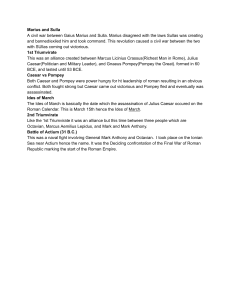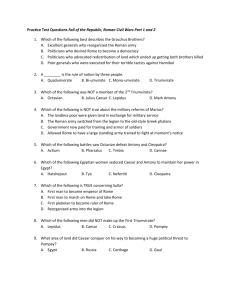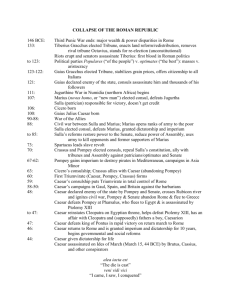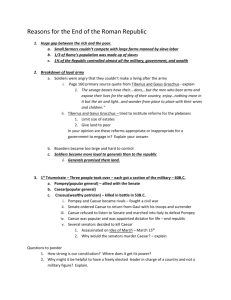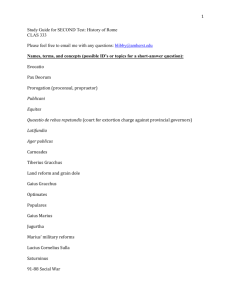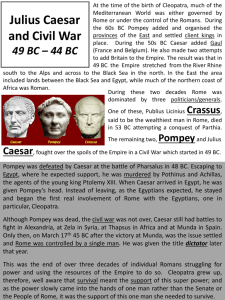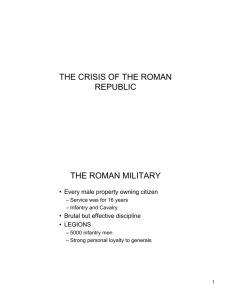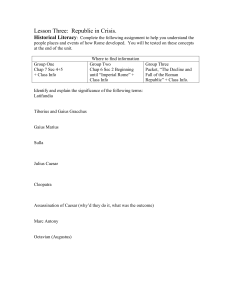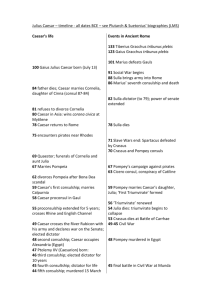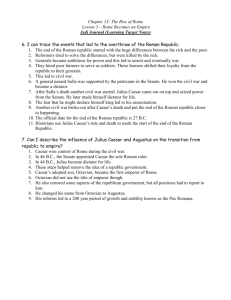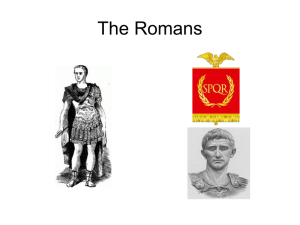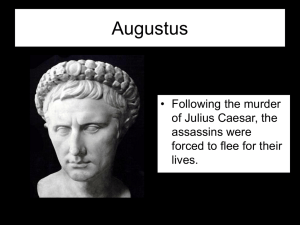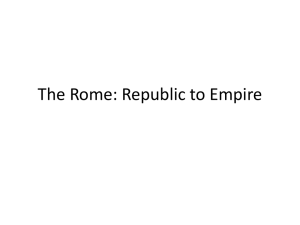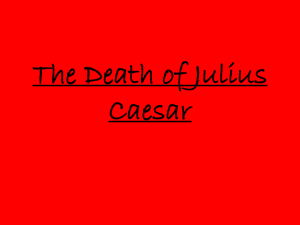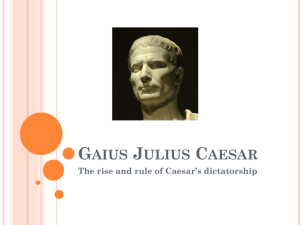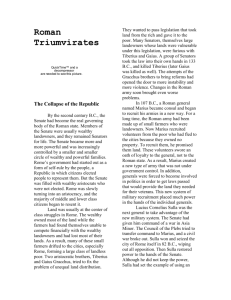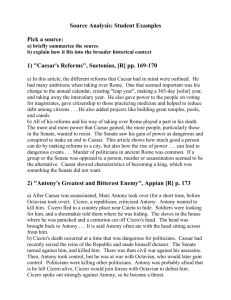FALL OF THE ROMAN REPUBLIC: 133-27 BC
advertisement
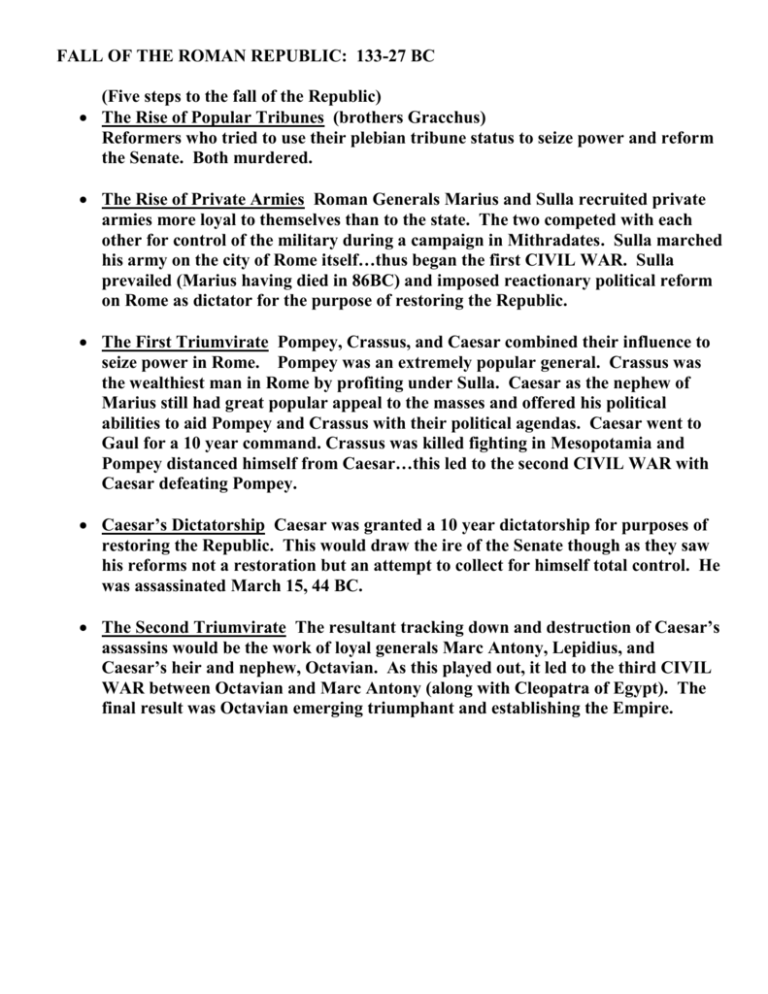
FALL OF THE ROMAN REPUBLIC: 133-27 BC (Five steps to the fall of the Republic) The Rise of Popular Tribunes (brothers Gracchus) Reformers who tried to use their plebian tribune status to seize power and reform the Senate. Both murdered. The Rise of Private Armies Roman Generals Marius and Sulla recruited private armies more loyal to themselves than to the state. The two competed with each other for control of the military during a campaign in Mithradates. Sulla marched his army on the city of Rome itself…thus began the first CIVIL WAR. Sulla prevailed (Marius having died in 86BC) and imposed reactionary political reform on Rome as dictator for the purpose of restoring the Republic. The First Triumvirate Pompey, Crassus, and Caesar combined their influence to seize power in Rome. Pompey was an extremely popular general. Crassus was the wealthiest man in Rome by profiting under Sulla. Caesar as the nephew of Marius still had great popular appeal to the masses and offered his political abilities to aid Pompey and Crassus with their political agendas. Caesar went to Gaul for a 10 year command. Crassus was killed fighting in Mesopotamia and Pompey distanced himself from Caesar…this led to the second CIVIL WAR with Caesar defeating Pompey. Caesar’s Dictatorship Caesar was granted a 10 year dictatorship for purposes of restoring the Republic. This would draw the ire of the Senate though as they saw his reforms not a restoration but an attempt to collect for himself total control. He was assassinated March 15, 44 BC. The Second Triumvirate The resultant tracking down and destruction of Caesar’s assassins would be the work of loyal generals Marc Antony, Lepidius, and Caesar’s heir and nephew, Octavian. As this played out, it led to the third CIVIL WAR between Octavian and Marc Antony (along with Cleopatra of Egypt). The final result was Octavian emerging triumphant and establishing the Empire.
